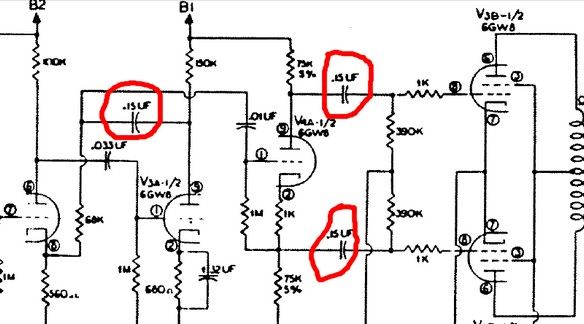Greetings!
After playing with my Thunder 1 for a few years in stock configuration, I want to try different values for the coupling caps to get some earlier breakup. I was expecting 2 coupling caps, but after looking at a schematic, I think I am seeing three, but I am not sure. I've circled the suspects below:

It's the cap on the bottom right that I suspect is not a coupling cap. Am I correct? Much appreciated!
After playing with my Thunder 1 for a few years in stock configuration, I want to try different values for the coupling caps to get some earlier breakup. I was expecting 2 coupling caps, but after looking at a schematic, I think I am seeing three, but I am not sure. I've circled the suspects below:

It's the cap on the bottom right that I suspect is not a coupling cap. Am I correct? Much appreciated!